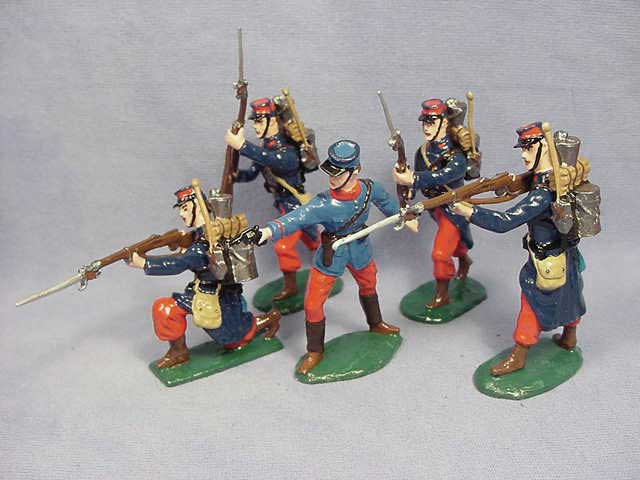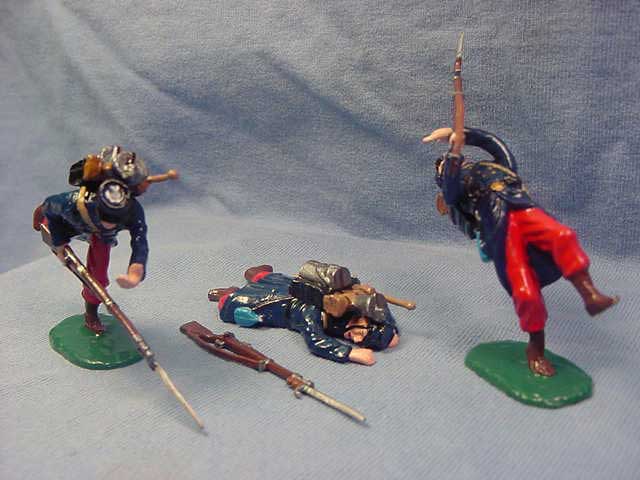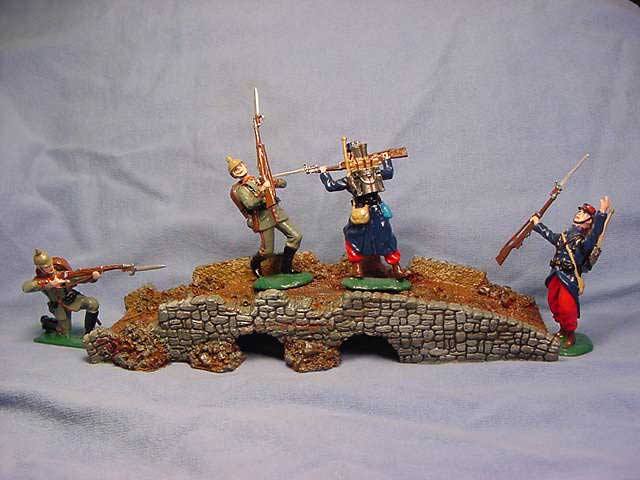It has often been said that the French Army of 1914 was prepared for war: whether it was prepared for a conflict like the Great War is another matter.

France had universal conscription on the outbreak of war, with men been called to join the army at eighteen and, on average, completing a four year term of service. On discharge from the regular forces,

they were immediately placed on the reserve until they were roughly thirty-three years of age, and then they joined the territorials, often staying in until they were in their late forties. It meant that the average Frenchman was committed to military service, in one way or another, for most of his adult life.


In 1914 uniforms, equipment and tactics for the average infantryman had changed little since the Franco-Prussian War of 1870-71. Troops still wore the blue serge Kepi (cap), tunic and greatcoat, and red trousers.
Personal equipment was made of leather, and cumbersome and heavy compared to many European armies of the day. The standard rifle was the 8mm Lebel; certainly an improvement on the rifles used in the Franco-Prussian War, but a long unwieldy beast, with a long spiked bayonet which, when fitted, meant that the weapon usually towered over the average soldier.


Machine-Gun Platoon
Medical cart plus personnel
Four Companies each of 4 officers and 250 other ranks
A company consisted of four platoons or "sections", and a platoon four squads or "escouades".
The battalion train comprised:
Headquarters carts
2 Light Tool carts
1 Field Forge
3 Meat wagons
13 Food wagons
A Brigade consisted of two Régiment d'Infantrie, and a Division, two Brigades. An Army Corps was made up of two of these Divisions.
Note - there was no proper field kitchen in a battalion until 1915.
The men who were on the Reserve in 1914 were immediately recalled to military service when war broke out, and because they were fully trained soldiers, could be immediately formed into regiments. They were made from the old R.I.s by adding 200, so were numbered 201 to 373. However, each of these only had two battalions of four companies, plus two machine-gun platoons. They were grouped together into three R,I, to make one "Division de Réserve".

The territorial units, made up of men in their mid-thirties and forties, were created on a regional basis in 1914. Known as Régiment Territoria Infantrie (R.T.I.), there were 145 of them formed on the outbreak of war and numbered 1 - 145. Depending on the available recruits for each region, a R.T.I. comprised of between two and four battalions, supported by two machine-gun platoons.above camp randall mins
(Left: Soldat 1er classe Arthur Bodin of the 5th R.T.I. showing a typical French territorial of the 1914 period. ©Paul Reed) camp randall below

These hardy and determined French soldiers, ill-equipped and often poorly led, were marched off into some of the most costly battles France has ever fought. The Battle of the Frontiers and the fighting in 1914 alone cost the French Army more than 300,000 casualties. The wearing of red trousers on battlefields dominated by the machine-gun and artillery made perfect targets, and changes in uniforms began by the winter of 1914. Indeed, the French were actually the first to introduce the steel helmet. The first modal consisted of a steel 'skull-cap' tied under your chin with tapes, with the Kepi placed on top. However, this offered only limited protection and the formal French helmet adopted for the rest of the war was the Adrien.

No comments:
Post a Comment